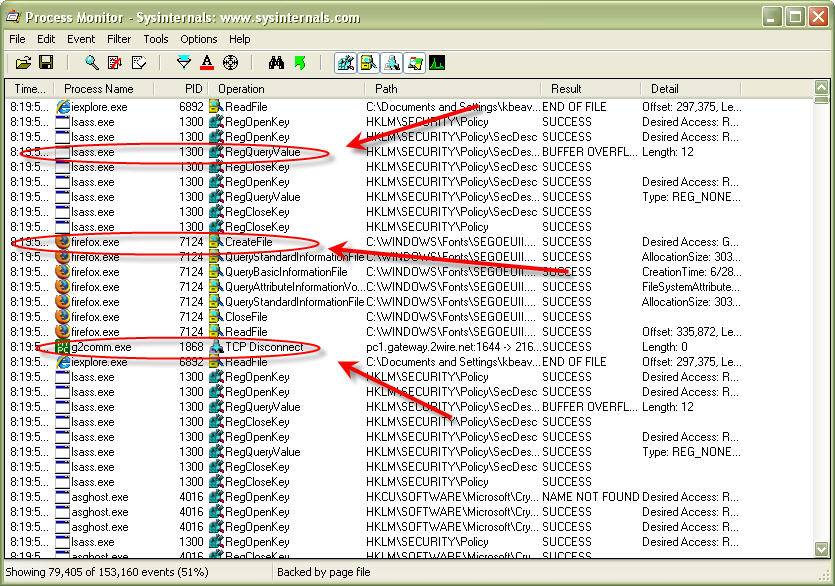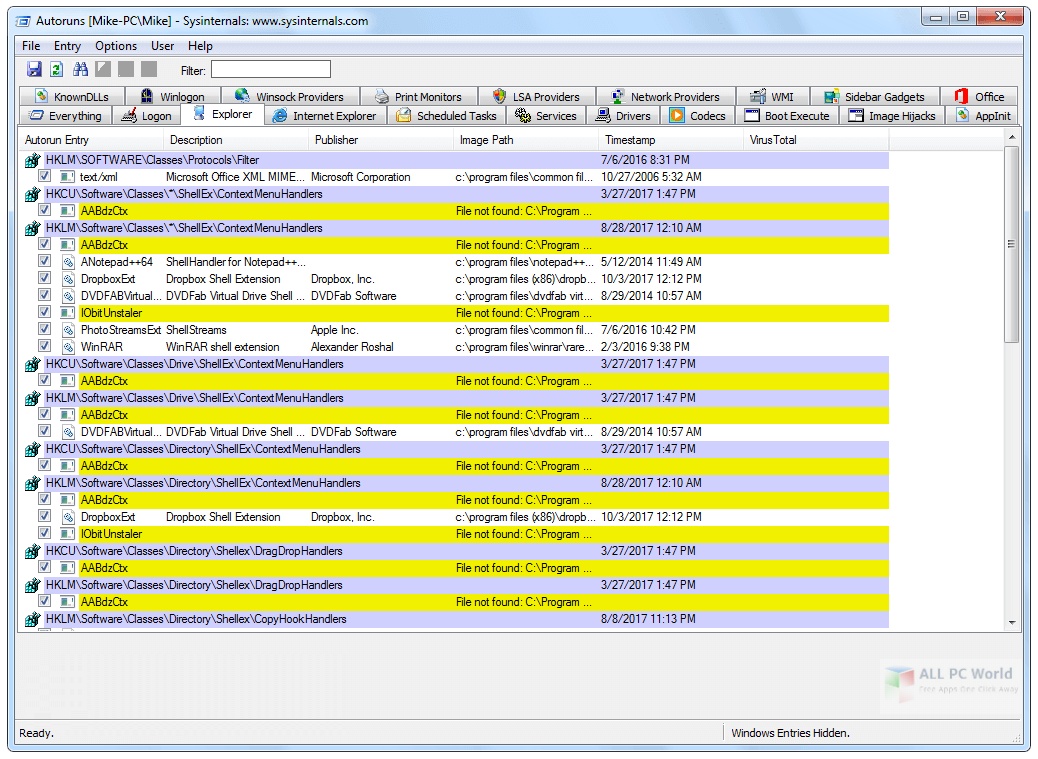
The key to using Process Monitor effectively is to filter out and only focus on the events that interest you. This means that the list of data will rapidly grow even if your machine is idling away, as services interact with your system. In the background, Process Monitor will continue logging any registry, file system, network, process, and profiling event that may occur. When you first open Process Monitor, you will be greeted with an enormous amount of rows and data. Even if a service or application is spawning a new process, changing the file system in some way, or connecting to a network, you can track it with Process Monitor. With Process Monitor, you can see which registry keys are being updated by any application. Process Monitor allows you to capture a log of every single event that happens on your Windows PC. Process Monitor is quite different from Process Explorer. Process Monitor: The Ultimate Windows Log Next, let's look at some of the more popular tools and how you might want to use them.

There are also a variety of heavy-duty command line utilities that help with everything from network and file share security to advanced Active Directory installations and many more. SDelete, which is a DoD-compliant secure delete program, also cleanses your free space and leaves no traces of previously deleted files.

See how to manage Windows Startup programs with Autoruns for more information. Process Explorer, on the other hand, is similar to Windows Task Manager but with a ton of additional features.Īutoruns helps you manage Windows startup processes as well as detect particularly pesky embedded malware.

There are tools such as Process Monitor, which monitors file system, registry, process, thread, and DLL activity in real time. Whilst it is unlikely that any one person will ever make use of all the tools available within the suite, there is a plethora of utilities at your disposal.


 0 kommentar(er)
0 kommentar(er)
